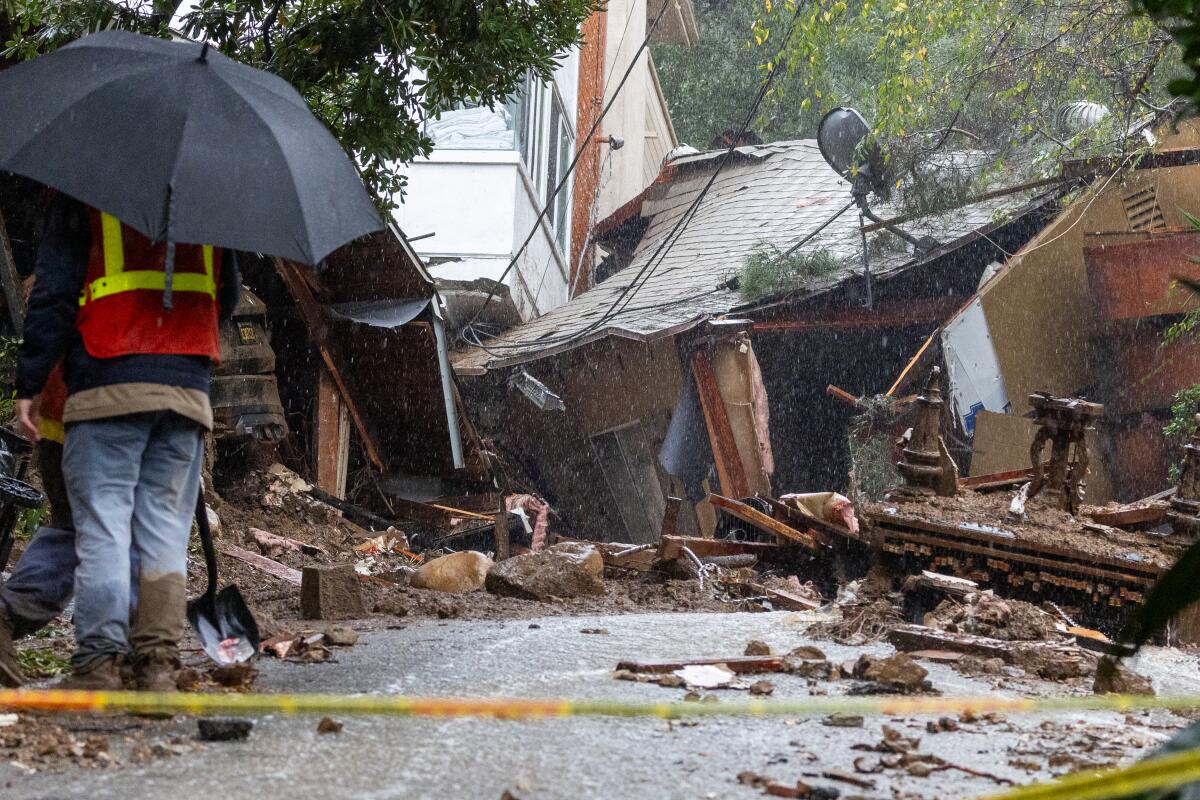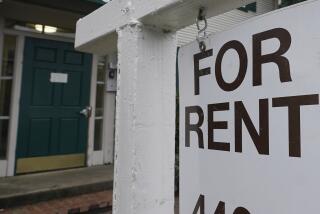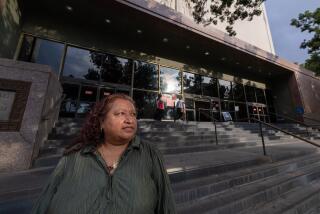Is your rental home flooded? What tenants can do to fix the damage

As soon as the floodwaters subside in Southern California, many tenants will start the daunting task of assessing what’s been damaged or lost in their rental homes or apartments.
As of late Monday, authorities just in Los Angeles County responded to more than 300 mudslides, with 35 homes or buildings damaged by debris flows, including five that were deemed unsafe to enter.
If you were given evacuation orders, do not return to your home until the order has been lifted by the local authorities or the city.
Once you’re able to safely return to your rental and assess the damage, there are two things you should know.
First, damage to the rental property is not your responsibility, it’s the landlord’s. Getting your landlord to fix the damage, though, can be a challenge.
“Unfortunately, too much of this is a burden of the tenant to hold the landlord accountable,” said Larry Gross, executive director of the Coalition for Economic Survival.
Second, although a renters insurance policy can help under certain circumstances, it will not cover flood damage to your personal property.
Renters insurance reimburses you for damage to your belongings, including losses caused by some — but not all — natural disasters. The natural disasters that are not covered by rental insurance include floods, mudflows, sinkholes and earthquakes.
Janet Ruiz, communications director for the Insurance Information Institute, said flood damage is defined as losses caused by water that rises from the ground up. However, if water comes into your home from above — for example, when wind damages the roof or a window and rain cascades in — there is a possibility of coverage.
A water pipe that bursts and floods your dwelling is the other type of water damage that is covered by a renter’s policy, Ruiz said.
If your furniture, clothes, and computer are floating in a pool of floodwater in your living room, chances are good that you’ll have to pay out of pocket to replace them.
Your renters policy may still come in handy if you’re forced to move by the storms. Depending on the extent of the damage, a dwelling can be deemed uninhabitable. Your insurance might be able to cover the costs associated with temporary relocation; contact your insurance provider to find out.
Ruiz said most policies will pay for your additional living expenses when you are displaced from your home by a covered loss (such as damage caused by the wind) and need temporary shelter. Keep all your receipts to document your expenditures.
How to get your landlord to make repairs
Landlords have the responsibility to meet the habitability requirement for rental properties, meaning every rental unit must be maintained in a safe living condition. Part of the requirement is to provide “effective waterproofing and weather protection to the roof and exterior walls, including unbroken windows and doors.”
When a storm has damaged a rental — for example, high winds knock down a tree that lands and caves in a roof or rain has caused a roof leak — the landlord must fix it. State law also requires landlords to make sure their properties are free of dampness and visible mold.
Because of the legal requirements, it may be easy to get your landlord to fix flood damage right away. But most Californians don’t carry flood insurance, so the costs faced by your landlord could deter a speedy response.
Also, when a storm of this magnitude barrels through the state, contractors are usually overwhelmed with requests for repairs. A landlord who is trying in good faith to fix a rental might be stuck waiting until they can get a professional to do the work.
“Unfortunately,” Gross said, “there are too many [situations] where it’s not [repaired quickly] and of course it also depends on the severity of the situation.”
If a landlord doesn’t repair the damage in a reasonable time frame, a renter in the city of Los Angeles can file a complaint with the city’s housing department. This will prompt a visit by a code enforcement officer.
Landlords are also responsible when damage to the rental causes harm to the renter’s personal property. If your landlord won’t comply with your request for repairs, replacement or reimbursement, that can be a case for small claims court as well.
Gross doesn’t advise withholding your rent to try to get the landlord to fix damage to your rental, although you have that option. Doing so, Gross said, could lead the landlord to seek to evict you.
The Coalition for Economic Survival is one of several local organizations that can help renters understand their rights and advise them what can be done if a prickly landlord isn’t helpful. Here’s a list of some of the others.
- Tenants Together is a statewide coalition of local tenant organizations, that offers resources and a directory to find an organization near you.
- Basta, which has offices in Los Angeles and Long Beach, helps residents with habitability problems, among other services.
- The Housing Rights Center serves Los Angeles County and has a housing rights hotline — 800-477-5977 — available from 8:30 a.m. to 5 p.m.
- The Legal Aid Foundation of Los Angeles has an online tenant small claims resource library.
- Tenants of California‘s members can advise renters on habitability issues.
- Stay Housed LA can provide free legal help to certain Los Angeles County residents. Check the group’s website for a list of eligible ZIP Codes.
- Santa Monicans for Renters’ Rights has volunteers who can answer questions or offer a referral to a resource who can help.
What if my car has been damaged?
Flood damage to cars, including flooding from a storm surge, is covered if you have “comprehensive coverage,” also known as “other than collision” coverage, as part of your auto insurance. Comprehensive coverage is optional with a standard auto policy.
Ruiz said most people who took out a car loan to buy their vehicle will have comprehensive coverage because loan companies require it.
Some people with older cars do not elect to have the coverage, however. That’s because, “at the end of the day, you only get the value of the vehicle,” she said.
What else can renters with flood damage do?
You might not be able to get reimbursed for your lost items at the moment, but you can deduct the amount you lost on your state and federal tax returns.
To help in the future, renters can apply for flood insurance to protect their personal belongings through FEMA’s National Flood Insurance program. For renters, the program covers up to $100,000 in damage to the contents of a unit.
The National Flood Insurance Program is available to anyone living in one of the 24,000 participating U.S. communities or in a flood-prone area. You can see whether your community is part of the program by checking the “community status report” on the program website.
If your community is in the program, you can obtain a flood policy from a participating insurer. The National Flood Insurance program offers a list on its website.
The policy won’t go into effect, however, until 30 days after it’s purchased.
You can also reach out to private insurers to see if they offer their own version of flood insurance. But there aren’t many that do, Ruiz said, so your best bet is to stick with the National Flood Insurance Program.
Staff writer Grace Toohey contributed to this report.
More to Read
Sign up for Essential California
The most important California stories and recommendations in your inbox every morning.
You may occasionally receive promotional content from the Los Angeles Times.











